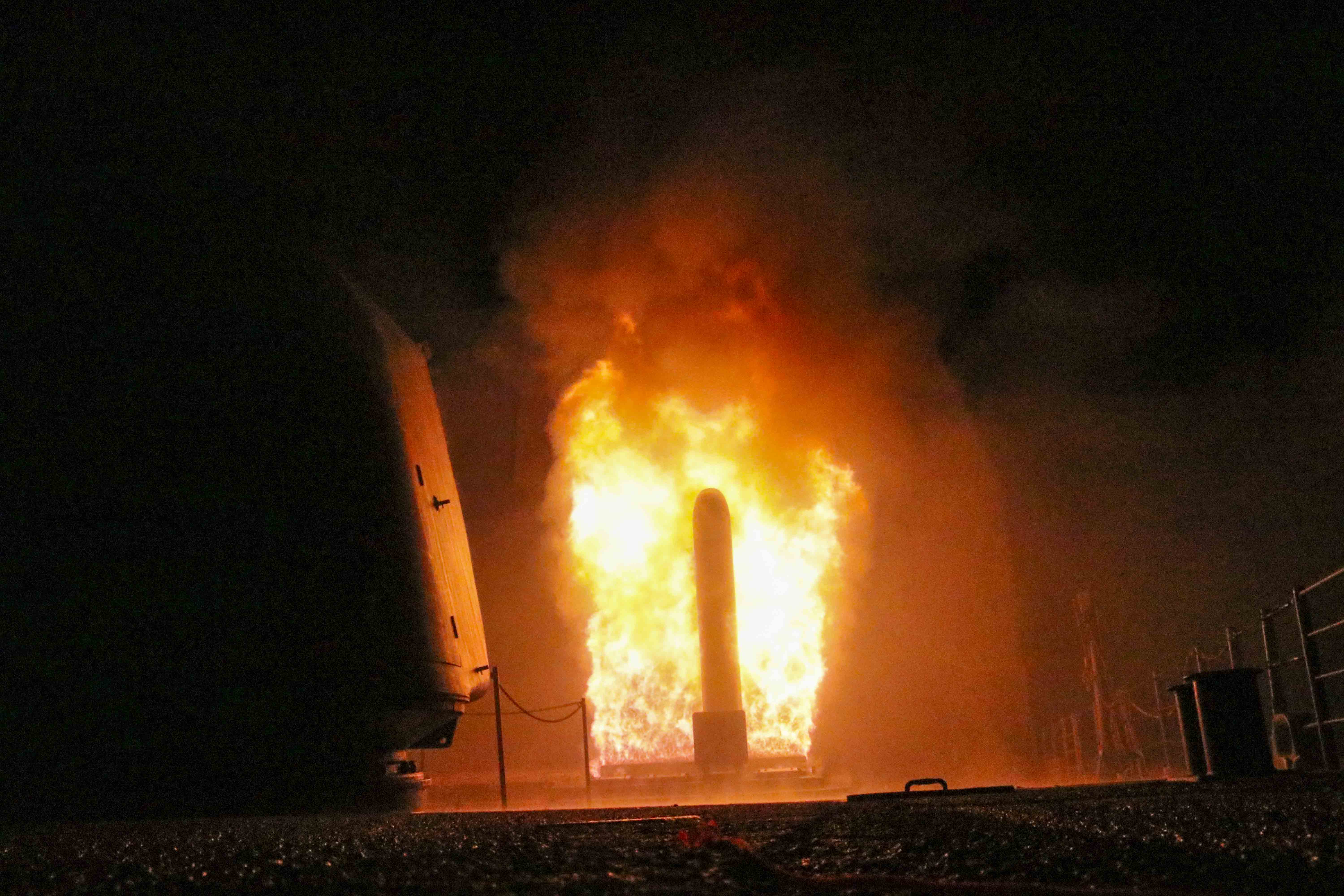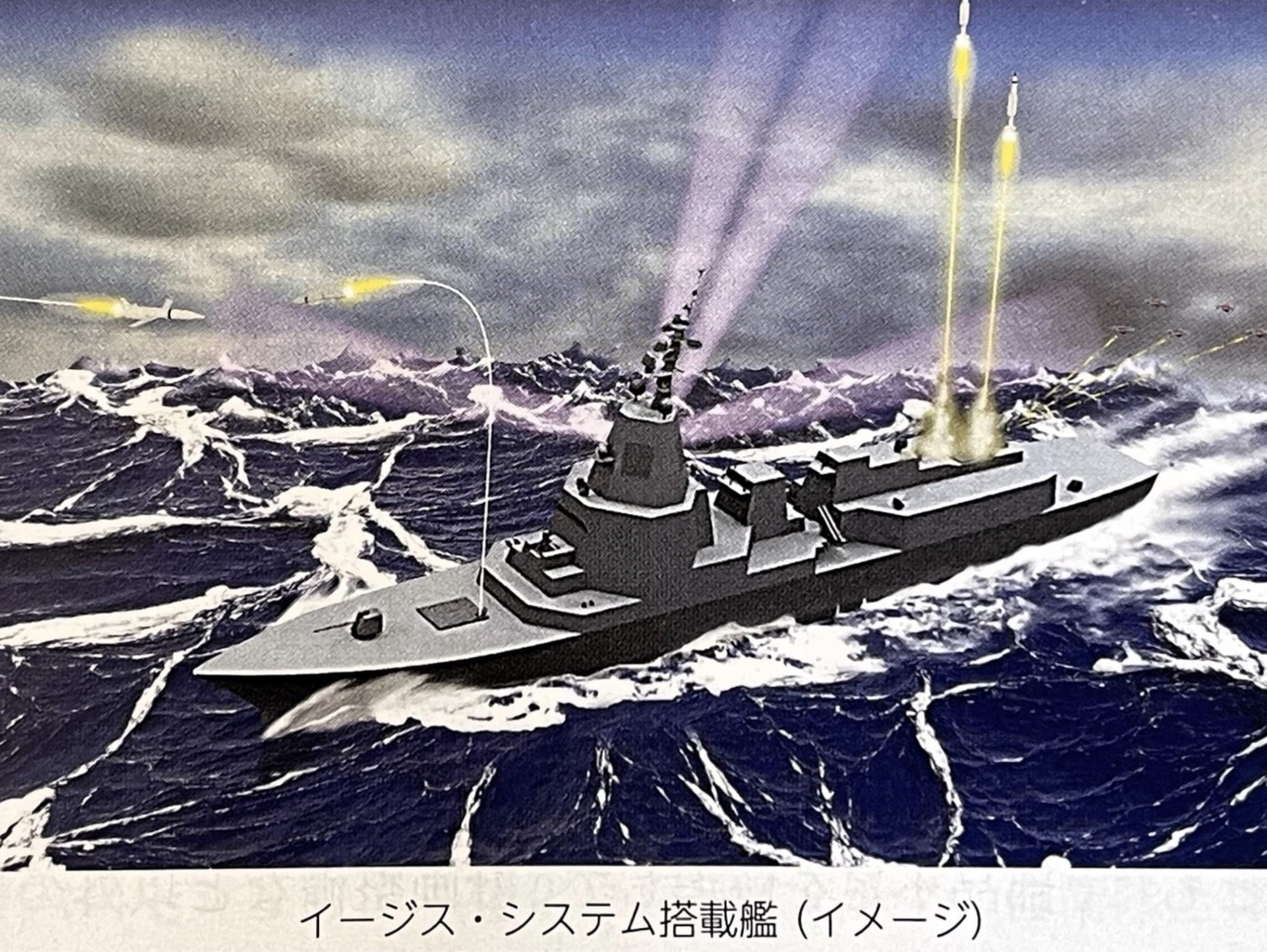
The U.S. Navy began training Japan Maritime Self-Defense Force personnel on the Tomahawk cruise missile this week, according to a Thursday statement by Japan Defense Minister Minoru Kihara.
In his statement, Kihara said that the Ministry of Defense and Japan Self Defence Forces will strengthen its stand-off defense capabilities to disrupt and defeat the forces invading Japan early and from far away. “As a part of our effort, regarding Tomahawk, the United States Navy has been conducting a training course for JMSDF personnel starting from March 25th,” read the statement, which also claimed the U.S. will “conduct such training every other month.”
The statement also said that with U.S. cooperation, the MOD wants to complete personnel training before its fiscal year 2025 (Apr. 1, 2025–Mar. 31, 2026) Tomahawk missile acquisition.
“We will continue to promote the procurement of various stand-off missiles and work for early building of stand-off defense capabilities based on the Defense Buildup Program,” concluded the statement.
On Thursday, U.S. Ambassador Rahm Emanuel posted on social media channel X a photo of him visiting destroyer USS McCampbell (DDG-85), docked at Commander Fleet Activities Yokosuka, which is where the JMSDF is receiving training. Japan’s NHK news reported that this initial training involved 20 JMSDF personnel and would end on Friday, with an advanced training program to be carried out in the future. McCampbell just recently returned to Yokosuka on Mar. 2 to rejoin Destroyer Squadron (DESRON) 15 after completing a midlife modernization, according to a Navy release.

Japan announced on Jan. 18 that it had signed off for 200 Block IV Tomahawks, 200 Block V Tomahawks and 14 Tactical Tomahawk Weapon Control Systems, along with support, training, maintenance, spares and other ancillary services and items. A DSCA release in November puts the estimated acquisition cost at $2.35 billion. Japan’s MOD stated that acquisition will occur between the Japanese fiscal years 2025 and 2027.
Japan originally scheduled a buy of 400 Block V Tomahawks with deliveries beginning in FY 2026. But, in October last year during his visit to the Pentagon, Kihara announced Japan would move up the schedule by one year because of the increasingly severe security environment and also would change the procurement to a mix of Block IVs and Vs to accommodate the revised schedule.
The “severe security environment” cited by Japan and outlined in its the Defence of Japan 2023 white paper is North Korea’s continuing development and testing of nuclear weapons and ballistic missile capability in defiance of U.N. resolutions, China’s increasing military capabilities and assertiveness, Russia’s continuing war with Ukraine and increased cooperation and joint military activities by Russia and China in the vicinity of Japan.
Japan plans to install the Tomahawks on its eight Aegis destroyers: four Kongō class, two Atago class and two Maya class, and on the two new Aegis system-equipped destroyers to be commissioned in 2027 and 2028.
Also on Thursday, Japan’s Joint Staff Office (JSO) issued a release stating that Chairman of the Joint Chiefs of Staff Gen. CQ Brown, Jr., Chief of Staff, Japan Joint Staff Gen. Yoshihide Yoshida and Chairman of the Republic of Korea Joint Chiefs of Staff Adm. Kim Myung-soo held a video teleconference that day in which they discussed trilateral cooperation initiatives, global security issues. and recent North Korean “provocations.” “The leaders also agreed that the DPRK’s provocative actions including nuclear and missile development reflect the importance of increasing the depth, scale, and scope of trilateral cooperation by the United States, Japan, and the Republic of Korea,” read the release.
The release also stated that the military chiefs applauded mutual efforts in achieving trilateral initiatives on the activation of the real-time missile warning data-sharing mechanism, and on establishing a multiyear trilateral exercise plan based on the 2023 Camp David Summit and Trilateral Defense Ministerial Meeting. Gen. Brown also reaffirmed the strong U.S. commitment to defending Japan and the Republic of Korea. “The leaders look forward to holding the next trilateral chiefs of defense in-person meeting this summer,” concluded the release.





